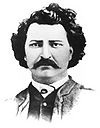The Cartoon Portal

A cartoon is a type of visual art that is typically drawn, frequently animated, in an unrealistic or semi-realistic style. The specific meaning has evolved, but the modern usage usually refers to either: an image or series of images intended for satire, caricature, or humor; or a motion picture that relies on a sequence of illustrations for its animation. Someone who creates cartoons in the first sense is called a cartoonist, and in the second sense they are usually called an animator.
The concept originated in the Middle Ages, and first described a preparatory drawing for a piece of art, such as a painting, fresco, tapestry, or stained glass window. In the 19th century, beginning in Punch magazine in 1843, cartoon came to refer – ironically at first – to humorous artworks in magazines and newspapers. Then it also was used for political cartoons and comic strips. When the medium developed, in the early 20th century, it began to refer to animated films that resembled print cartoons. (Full article...)

In print media, a cartoon is a drawing or series of drawings, usually humorous in intent. This usage dates from 1843, when Punch magazine applied the term to satirical drawings in its pages,[1] particularly sketches by John Leech.[2] The first of these parodied the preparatory cartoons for grand historical frescoes in the then-new Palace of Westminster in London.[3]

Selected article -
Louis Riel is a 2003 historical biography in comics by Canadian cartoonist Chester Brown. It deals with the relationship of Métis rebel leader Louis Riel (pictured) with the newly established Canadian government. It begins shortly before the 1869 Red River Rebellion, and ends with Riel's 1885 hanging for high treason. The book explores the possibly schizophrenic aspect of Riel's personality—he believed God had named him Prophet of the New World, destined to lead the Métis people to freedom. The work is noted for its emotional disengagement, its intentionally flat dialogue, and a minimalist drawing style inspired by Harold Gray's comic strip Little Orphan Annie. The lengthy, hand-lettered appendix provides insight on Brown's creative process and biases, and highlights where he changed historical facts to create a more engaging story. It was the first comic book to receive a grant from the Canada Council for the Arts. It was critically well received, and won three Harvey Awards. The original serialization (1999–2003) sold poorly, but the book version was a surprise bestseller. Its success played a major part in gaining shelf space for serious graphic novels in mainstream North American bookstores.
Selected character -
Captain Marvel is a comic book superhero, originally published by Fawcett Comics and now owned by DC Comics. Created in 1939 by artist C.C. Beck and writer Bill Parker, the character first appeared in Whiz Comics #2 (Feb, 1940). With a premise that taps into adolescent fantasy, Captain Marvel is the alter ego of Billy Batson, a youth who works as a radio news reporter and was chosen to be a champion of good by the wizard Shazam. Whenever Billy speaks the wizard's name, he is instantly struck by a magic lightning bolt that transforms him into an adult superhero empowered with the abilities of six mythological figures. Several friends and family members, most notably Marvel Family cohorts Mary Marvel and Captain Marvel, Jr., can share Billy's power and become "Marvels" themselves. Hailed as "The World's Mightiest Mortal" in his adventures (and nicknamed "The Big Red Cheese" by archvillain Doctor Sivana, an epithet adopted by fans as a nickname for their hero), Captain Marvel was, based on sales, the most popular superhero of the 1940s, since the Captain Marvel Adventures comic book series sold more copies than Superman and other competing superhero books during the mid-1940s. Captain Marvel was also the first superhero to be adapted into film in 1941 (The Adventures of Captain Marvel). Fawcett ceased publishing Captain Marvel-related comics in 1953, dure in part to a copyright infringement suit from DC Comics alleging that Captain Marvel was an illegal infringement of Superman.
Did you know... -
- ...that publication of comics in Hungary largely stopped during World War II due to Nazi pressure?
- ...that the Fire Nation, from the Universe of Avatar: The Last Airbender, was inspired by photos of volcanic islands of Iceland and the Pacific Ocean?
- ...that the Sam Sheepdog and Ralph Wolf cartoons Sheep Ahoy, A Sheep in the Deep, and Don't Give Up the Sheep were censored by ABC to remove a dynamite stick, a smoke break scene, and a spanking scene respectively?
- ...that Sozin's Comet: The Final Battle, the two-hour finale for Avatar: The Last Airbender, was the most-watched cable television broadcast in the week of its transmission?
Selected list -
There were 61 episodes of Avatar: The Last Airbender, an Emmy Award-winning American animated television series written and created by Michael Dante DiMartino (pictured) and Bryan Konietzko. It first aired on February 21, 2005 with a one-hour series premiere and concluded its run with a two-hour TV movie on July 19, 2008. The Avatar franchise refers to each season as a "Book", in which each episode is referred to as a "chapter". Each "Book" takes its name from one of the elements that the protagonist must master: Water, Earth, and Fire. The show's first two seasons each consisted of 20 episodes, while the third season had 21. In addition to the three seasons, there were two recap episodes and three "shorts". The first recap summarized the first eighteen episodes while the second summarized season two. The first self-parody was released via an online flash game. The second and third were released with the Complete Second Season Box Set DVD. The entire series has been released on DVD in both Region One and Region Two.
General images -
Selected biography -
Lat is a Malaysian cartoonist whose work earned him the honorific title of datuk. He was born on 5 March 1951 in a village in Perak, Malaysia, and started supplementing his family's income at the age of nine by submitting his comics to magazines and newspapers. Four years later, he published his first comic book. In 1970, Lat left school and became a crime reporter while continuing his cartooning sideline. His comic about the Bersunat—a circumcision ceremony all Malaysian boys of the Islamic faith have to undergo—made a great impression on his newspaper's editor-in-chief. As a result, Lat became an editorial cartoonist. As he gained popularity through his cartoons in Malaysia, he published his autobiography in the form of two graphic novels—The Kampung Boy and Town Boy. The Kampung Boy was a huge success and gained him international renown. It is published in various countries around the world in several languages. Lat's cartoons provide an unbiased and humorous insight on the lives and culture of Malaysians, who consider him one of their most trustworthy citizens. His admirers include American cartoonists Sergio Aragonés and Matt Groening.
Subcategories
WikiProjects
- Main projects
- Arts • Animation • Comics • Entertainment • Visual arts
- Related Projects
- Anime and manga • Biography • Film • Fictional characters • Media franchises • Music • Television • Video games
Selected quote -
Topics
- Comic book
- Comic strip
- Digital comics
- Graphic novel
- Mobile comic
- Motion comics
- Trade paperback
- Webcomic
- Animator
- Animation director
- Animation studios
- Animation film festivals
- Feature-length films
- Short films
- Television series
- Computer-animated films
- Stop-motion films
- Traditional animation
- Limited animation
- Rotoscoping
- Stop Motion
- Clay
- Cutout
- Graphic
- Model
- Object
- Pixilation
- Puppetoon
- Computer animation
- Flash animation
- PowerPoint animation
- SVG animation
- Cel-shaded animation
- Crowd simulation
- Morph target animation
- Motion capture
- Non-photorealistic rendering
- Skeletal animation
Things you can do

- Requested articles: Fenwick (comics), Khimaera (comics), Mutant Underground Support Engine, Bruce J. Hawker, Marc Dacier, Hultrasson, Frankenstein Comics, Dave Johnson (comics), Paco Medina, Dappere Dodo, New Adventures of the Space Explorers, Habatales, Musical Box, Foo-Foo (TV series), Bonne nuit les petits, The Adventures of Lariat Sam, More...
- Images and photos needed: Request images that are needed from Wikipedia requested images of comics and animation to included in each articles.
- Stubs: Work on stubs in articles in Comics and Animation stubs.
- Infobox: Add infobox that are needed from Category:Comics articles without infoboxes and Category:Animation articles needing infoboxes in articles.
- Deletion sorting: Please see the collection of discussions on the deletion of articles related to comics and animation - compiled by WikiProject Deletion sorting
Related portals
Associated Wikimedia
The following Wikimedia Foundation sister projects provide more on this subject:
-
Commons
Free media repository -
Wikibooks
Free textbooks and manuals -
Wikidata
Free knowledge base -
Wikinews
Free-content news -
Wikiquote
Collection of quotations -
Wikisource
Free-content library -
Wikiversity
Free learning tools -
Wiktionary
Dictionary and thesaurus
More portals
Sources
- ^ Punch.co.uk. "History of the Cartoon". Archived from the original on 2007-11-11. Retrieved 2007-11-01.
- ^ Adler & Hill 2008, p. 30.
- ^ "Substance and Shadow: Original Editorial Accompanying "Cartoon, No. I"". Victorian web.org. Retrieved 29 October 2023.









































